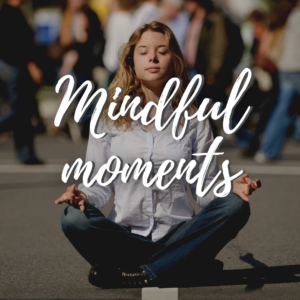Meditation and mindfulness has become more and more popular and left the area of ‘the crunchy granola’people. Now many start to meditate to release stress, managing their emotions, to increase focus or dealing with physical pain. But did you know that meditation and even mindfulness is over 2500 years old?
Ancient technique of Mindfulness in a new guise
It is said vipassana is the basic of all Mindfulness and Awareness training.
However, it is also said that mindfulness traces its origins back to various religious and even secular traditions. These include Hinduism, Christianity, Islam and Buddhism. And actually that is not surprising, since in religions people prayers, contemplate, seek enlightenment, awakening.
Nowadays, there are many mindful practices, from a variety of meditation to yoga, non-religious mindful techniques and awareness-raising therapy.
What is the difference between Vipassana meditation and Mindfulness?
The practice of mindfulness might not always be meditative. While meditation is the practice to be mindful.
There are many similarities, but the approach, execution and philosophy are slightly different. The basis of vipassana lies in the Buddhist teachings. Vipassana meditation is also known as Insight Meditation. It is the training of increasing and developing your awareness and insight. Meditation can help you go above, surpass, or supersede your mental processes.
Many people start to practice mindfulness to learn how to handle or reduce stress, fears and, pain, for example. And step by step you get tools to deal with experiences, events and sensations.
Mindfulness focus on the present moment, and there are various techniques and exercises, along meditation. There are also many daily activities you can do to practice being in the present moment.
What is Mindfulness?
Simply said, Mindfulness involves a conscious direction of our awareness.
Mindfulness is paying attention in a particular way, on purpose. In the present moment and nonjudgmental. Mindfulness involves a conscious direction of our awareness.
Our mind wanders through all kinds of thoughts. From planning something, to being angry about somebody from the other day. As we indulge in these kinds of thoughts we reinforce those emotions in our hearts and cause ourselves to suffer. Mostly these thoughts are about the past or future. The past no longer exists. The future is just a fantasy until it happens. The one moment we actually can experience — the present moment — is the one we seem most to avoid, to fight, not accept or want to hold on to and don’t want to let it go.
So in mindfulness we’re concerned with noticing what’s going on right now. That doesn’t mean we can no longer think about the past or future, but when we do so we do so mindfully, so that we’re aware that right now we’re thinking about the past or future.
Through exercises and assignments you practice being mindful. One of those is the vipassana meditation.
What is Vipassana meditation?
Vipassana (in Pali) or vipaśyanā (in Sanskriet) is one of India’s most ancient techniques of meditation.
It is the practice to see things as they really are. It involves concentration on the body or its sensations, and the insight which this provides.
During your meditation you are continuously practicing to observe, be aware what’s arising in the present moment. To accept what is. No Judgments. And to let go.
Within Vipassana meditation we use the movement of our belly is our anchor. Every time you notice your mind wandered around, you go back to this moment. To be aware of the rising and falling of the belly.
During meditation it happens often you get distracted by a sound around you, an emotion, a sensation in your body. That is very normal. At the moment you are aware of this, you just make a mental note of it, and you bring your attention back to your belly movement. You keep doing this over and over again. It helps you focus and to come back to the present moment. In this way we create calmness in our minds. And will be helpful in your daily life.
Combine mindfulness with vipassana meditation
Sometimes sitting still and meditate can be very hard: your mind is busy, your body is hurting. It is not needed to push yourself to hard. Yes, it is normal that a meditation can be challenging, but pushing to hard is also not the answer.
Taking a walk, having a shower, listening with attention, being aware of what you eat, all these practices can have a very calming effect on you as well and can increase your focus.
Free Mindfulness: 5 days of Mindful Moments
Are you interested in mindfulness but are not down to practice long sitting meditations?
Than this is for you!
Sign up for this free tips in how to implement mindfulness in your daily life.
More information you find on the page Free Mindfulness.
Hi, my name is Jolinda, and I work as a massage and Reiki therapist, happiness coach and provide yoga and meditation classes.
With my blogs I hope to inspire you to make positive changes into your life. For more ideas and tips check out my page Jolindas inspiration. Free trainings and videos you can find at free downloads and videos
Would you like to be kept informed and inspired? Then sign up for my newsletter.


